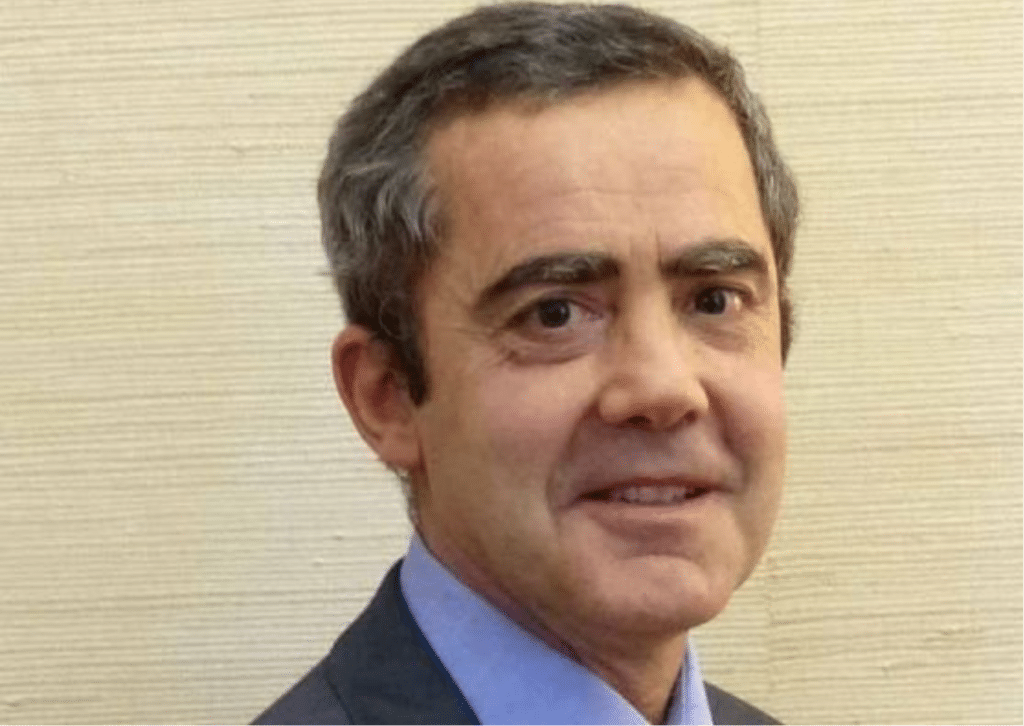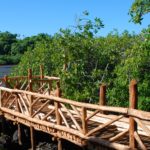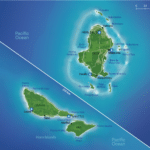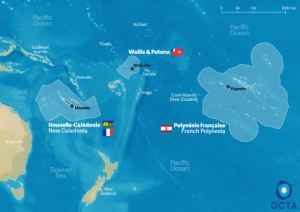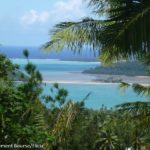The archipelago consists of two permanently inhabited main islands, Wallis on one hand and Futuna on the other. Wallis is surrounded by islets scattered inside the lagoon and Futuna, which is not near the lagoon, has only one islet that is much larger than those of Wallis.
Unlike Wallis that has a low relief (highest point 151 m), Futuna and Alofi are high volcanic islands (highest point 524 m).
The climate of the Wallis and Futuna Islands is tropical, hot and humid. The minimum and maximum temperatures range between 22°C and 32°C and average temperatures are always higher than 25.5°C. Humidity is generally above 82% and annual rainfall exceeds 3,000 mm. There is a cool season from May to September, moderated by trade winds and a hot, rainy season from November to April. The primary flora of Wallis and Futuna includes about 370 indigenous plants. The rate of endemism is about 2%.
